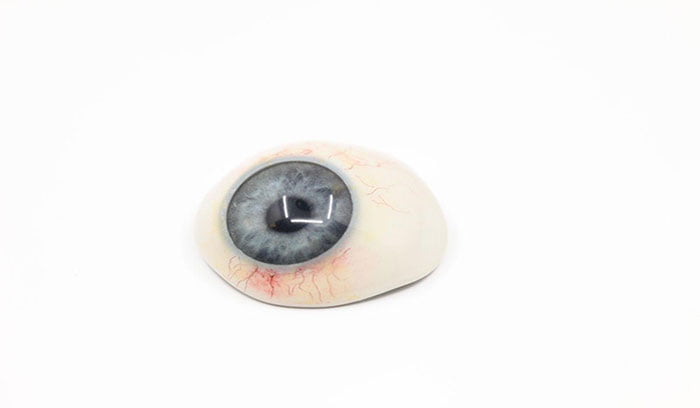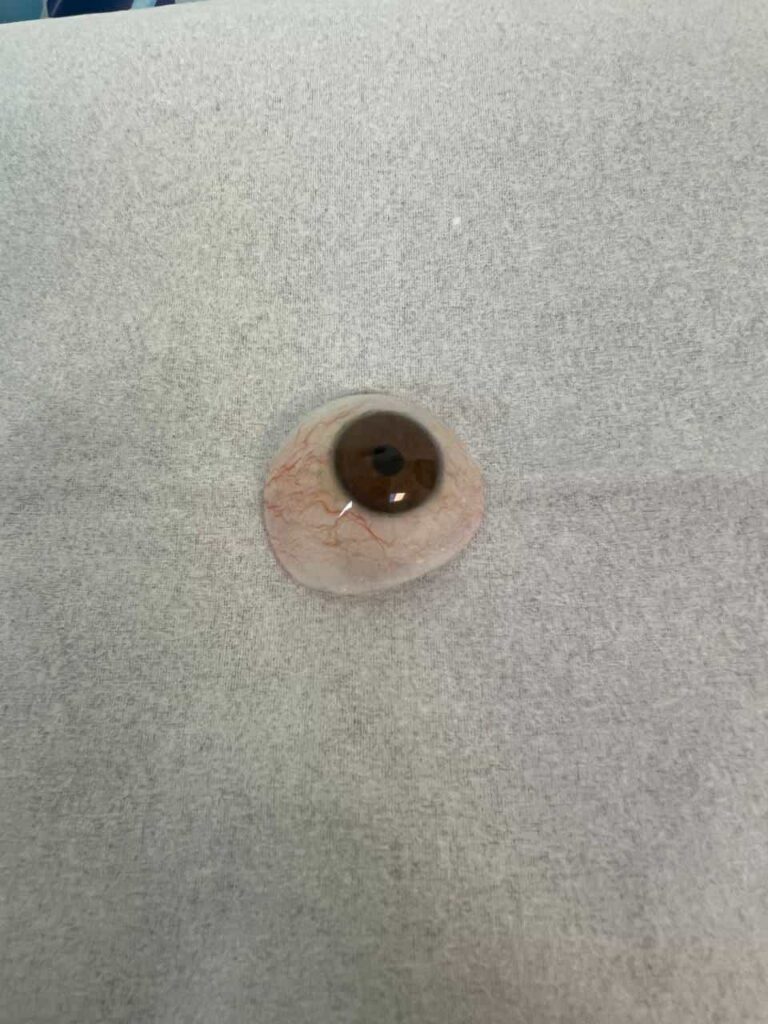The Acro-Composite Artificial Eye is one of the newest types of ocular prosthetics recently introduced to the market. Historically, ocular prosthetics have been used to fill the void left by an enucleated (removed) eye. These prosthetics serve as substitutes for the lost eye, significantly restoring the individual’s facial aesthetics.
Additionally, these artificial eyes prevent ptosis and possess limited mobility. This article explains the Acro-Composite Artificial Eye, its advantages, and how it differs from other prosthetics.
Material of Artificial Eyes: Advantages and Disadvantages
The oldest known artificial eye, discovered in the ruins of the Burnt City (Shahr-e Sukhteh), was made from bitumen paste. However, the first generations of modern ocular prosthetics were made of glass. Glass, being highly transparent and biocompatible, was considered an ideal material for manufacturing ocular prosthetics.
However, glass has notable drawbacks. Its fragile nature means glass prosthetics can easily break upon impact or if dropped. Furthermore, the process of crafting glass prosthetics is highly complex and cannot be achieved through molding. The technology and expertise required are limited to a handful of specialists, primarily in Germany. Consequently, glass prosthetics are only available as pre-made, mass-produced items. These limitations—fragility and difficult manufacturing—have rendered glass prosthetics obsolete, and they are rarely used today.
With advancements in science and technology, glass was replaced by acrylic resin (PMMA: polymethyl methacrylate). Unlike glass, acrylic prosthetics are not brittle and can be molded. Despite these advantages, acrylic sometimes causes allergic reactions in patients, and some complain about its weight.

The New Generation of Ocular Prosthetics (Acro-Composite Artificial Eye)
Mahaan prosthetic eye clinic, Iran’s first scientific center for ocular prosthetic fabrication, has always been a pioneer in this field. The clinic’s research and development team has consistently sought new materials with improved properties for prosthetic eyes.
After numerous consultations between Mahaan Clinic’s specialists and biomaterial engineers, a composite material was selected for the new generation of prosthetics. This composite, already approved for use in human tissues by the U.S. Food and Drug Administration (FDA), easily replaces acrylic as the primary material for artificial eyes. During fabrication, the composite substitutes the outer acrylic layer. These prosthetics are known as “Acro-Composite Ocular Prosthetics.”
Advantages of Acro-Composite Ocular Prosthetics
Key advantages of Acro-Composite Prosthetics over other types include:
- High compatibility with orbital tissues, significantly reducing secretions and eye infections.
- Enhanced transparency and natural appearance.
- Greater durability compared to standard acrylic prosthetics.
- Longer lifespan (15 years of functional use).
This fabrication method was patented under the title “Acro-Composite Ocular Prosthetic” (Registration No. 101056) by the Iranian Judiciary’s Intellectual Property Organization on 17/02/1399 (July 6, 2020). It is exclusively available at Mahaan prosthetic eye clinic. Note that any imitation or unauthorized replication of this product is legally prohibited.

Conclusion
Various types of ocular prosthetics exist, each with its own pros and cons. The Acro-Composite Artificial Eye, one of the latest innovations, offers advantages like superior biocompatibility, lighter weight, and greater patient comfort.
For consultations or pricing inquiries, please visit our clinic at the address listed in the “Contact Us” section or reach our experts via phone at 02166889076 or 09128357509.




No comment